Notes
The Visual Politics of Empty Shelves
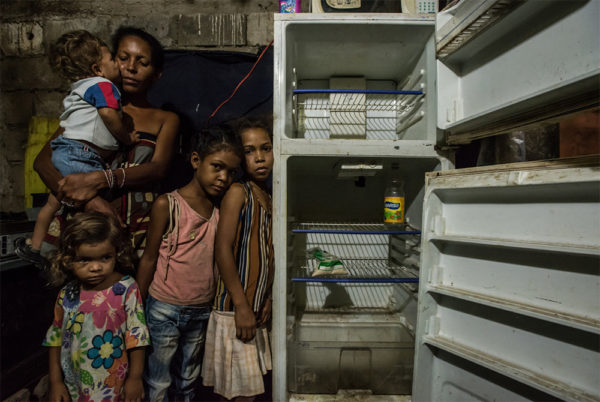
Cumaná, Venezuela, 2016
My first response to the photos accompanying the New York Times article “Venezuelans Ransack Stores as Hunger Grips the Nation” was resistance. I knew that Venezuela was in the midst of a major economic crisis and was experiencing serious shortages in basic supplies, but I didn’t trust the pictures or, rather, the way the pictures visualized Venezuela. Though honest depictions of real suffering, they fit too neatly into a familiar impression of us and them that has roots well beyond the Unites States’ relationship with socialist Venezuela.Abundance is part of the national story of the United States. Ample land, fruited plains, never-ending opportunity. Even though some of this country’s founding stories are as much tales of hunger as of feasting (the myth of Thanksgiving begins with the colonists’ inability to feed themselves, after all), plenty remains both the national default and national ideal. Immigrant stories corroborate that myth, from Irish immigrants fleeing famine in the mid nineteenth century to refugees in the late twentieth century remarking on grocery stores filled with multiple brands of every product. The contemporary equivalent of the land of milk and honey is a store with a whole aisle just for cereal.
From those fully stocked grocery aisles to amber waves of grain, the tropes of U.S. plenty are deeply visual. They conjure up bright colors and over-flowing scenes and make such richness into the quintessential American look.
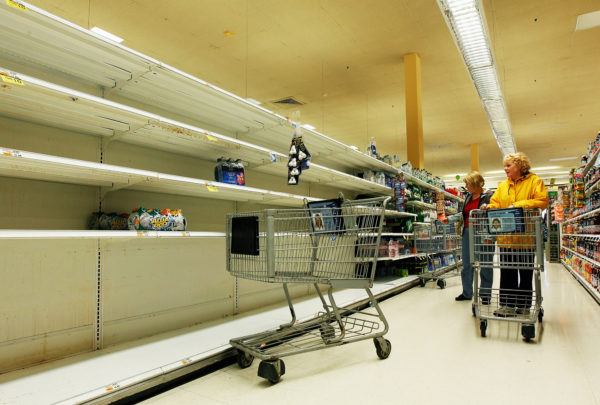
New York, 2012
On the flip side, pictures showing a lack of food within the United States turn those familiar visuals on their heads, emptying shelves and stripping fields. When such pictures appear, they signal natural disaster and herald a major breakdown of the social contract. Grocery shelves cleared of bottled water remind us of how dangerous hurricanes are in part because they so starkly contradict the familiar images of national plenty.
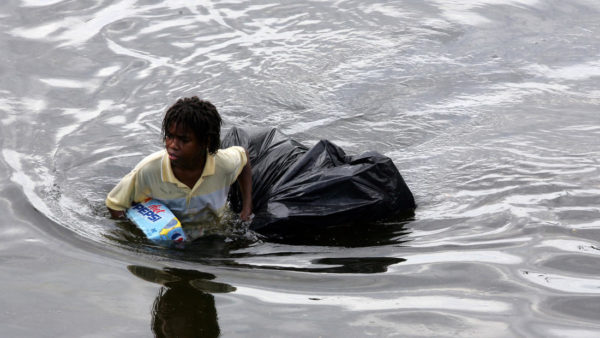
New Orleans, 2005
Scenes of “looting,” likewise, call into question the perpetrator’s access to American values—dignity, self-reliance—and even their humanity (it’s no mistake that people of color are disproportionately imagined as “looters”). Even in the face of real hunger, many people in the United States resist using food shelves because the stigma of not being able to provide for their families is too powerful. Looking beyond the United States, photographs of empty shelves have been a powerful means of contrasting “our” economic system with others’. Alongside portraits of Gorbachev and scenes from the fall of the Berlin Wall, empty shelves in Soviet commissaries are a major part of my visual memory of the fall of the Soviet Union, for example. The sparse options and institutional look of post-communist empty shelves pictured the difference between America’s success and the Soviet Union’s failure.
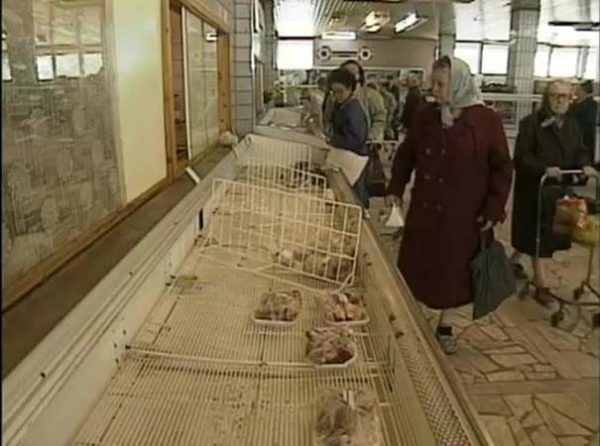
Moscow, 1990
And the contrast between communism’s scarcity and capitalism’s abundance continues to be a visually powerful commonplace. Compare the results of a Google image search for “American grocery store” and “Cuban grocery store” and you’ll see what I mean. In a February 2016 blog post about travel to Cuba titled “Blockade, Bureaucracy, and Groceries,” Rick Steves even explicitly invokes the connection to Soviet communism in his description of this photograph:

Cuba, 2016
He writes:
The store reminded me of similar stores in the USSR 30 years ago: almost no variety…just long rows of very basic products with labels seemingly produced by some tasteless government bureaucrat. Milk was milk—there wasn’t a hint of any varieties of milk.
Steves’ photograph of the meat section of that same store was predictable: essentially empty.
Grocery store shelves filled with options are visual metaphors for free choice, economic competence, and national success. Empty shelves, in turn, aren’t just signals of famine. They call out the failure of whole systems, entire political structures.
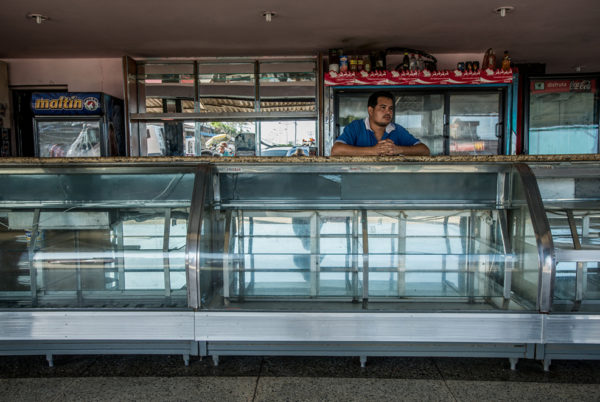
Boca de Uchire, Venezuela, 2016
And that brings me back to the photographs that sparked this post: those images showing the food shortages currently gripping post-Chávez Venezuela. The article and its accompanying slideshow activate many of the familiar tropes of famine: hungry people waiting in line, the elderly and the young in need, and, of course, row upon row of empty grocery store shelves.
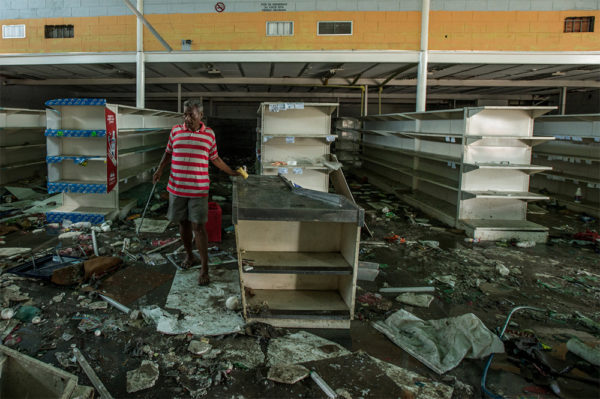
Cumaná, Venezuela, 2016
Whether you place the blame on socialist mismanagement of the economy, short-sighted over-reliance on oil revenues, the economic imperialism of the United States, or some combination, there is no denying the economic disaster facing Venezuela right now, nor the hunger and violence accompanying it.Even so, it is worth recognizing that photographs of empty shelves are not just photographs of hunger. For U.S. periodicals addressing U.S. audiences, such photographs picture the wages of socialism. Showing bare grocery stores, vacant refrigerators, and starving families, they also imagine a whole political system as economically and morally bankrupt.
— Christa Olson | @christajolson
Photo: Meridith Kohut / New York Times. caption: Leidy Cordova, 37, with four of her five children at their home in Cumaná, Venezuela, last week. Their broken refrigerator held the only food in the house: a bag of corn flour and a bottle of vinegar. photo 2: Mike Stobe/Getty Images. caption: Connie of Long Beach grabs the few remaining water bottles from the shelves as the Waldbaums grocery store as Hurricane Sandy approaches on October 28, 2012 in Long Beach, New York. photo 3: Dave Martin / Associated Press. caption: A young man walks through chest deep flood water after looting a grocery store in New Orleans on Tuesday, Aug. 30, 2005. Flood waters continue to rise in New Orleans after Hurricane Katrina did extensive damage when it made landfall on Monday. photo 4: Empty Food Store in Moscow 1990, still from “USSR Grocery Store Uncut.” photo 5: Rick Steves, “Blockade, Bureaucracy, and Groceries.” photo 6: Meridith Kohut / New York Times. caption: Dionny Ramárez, 36, at the bakery in Boca de Uchire where he works. It was looted by hundreds of people on June 7. He said he grabbed the bakery’s Panini press, one of its most valuable items, to keep it safe. photo 7: Meridith Kohut / New York Times. caption: A man searched for food last week at a grocery store in Cumaná that had been looted.

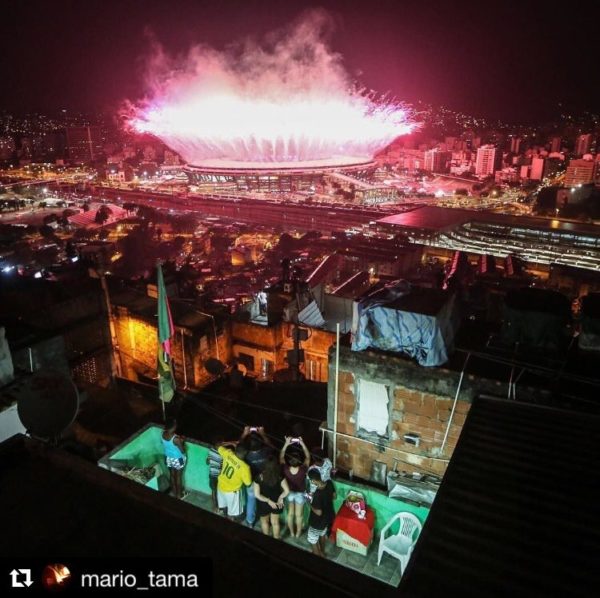
Reactions
Comments Powered by Disqus